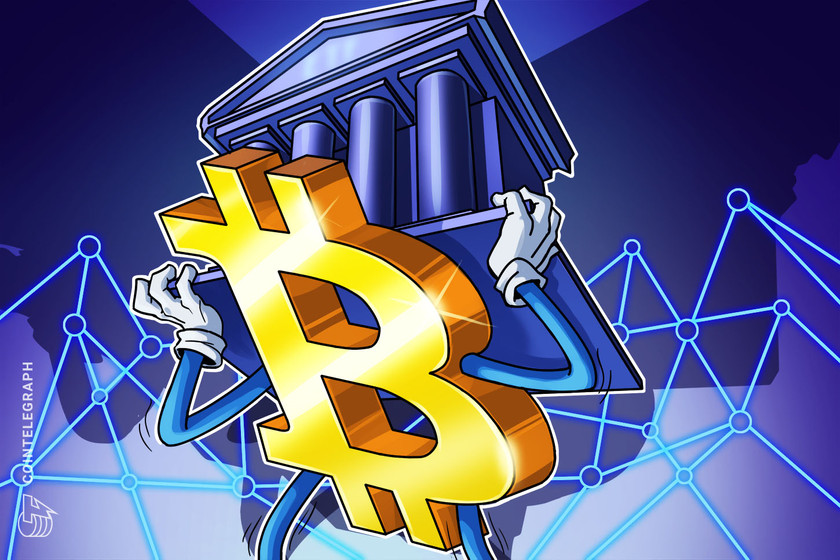US ethics advisory on federal employee’s crypto has basis in legislation


The Office of Government Ethics reminded federal agency ethics officers of current law and extended its interpretation of the law to mutual funds.
When the United States Office of Government Ethics (OGE) released its Legal Advisory 22-04 on July 5, most attention was given to its conclusion that federal employees who own any amount of cryptocurrency or stablecoins whatsoever may not participate in regulation and policymaking that concerns crypto. The legal advisory (LA) raised some eyebrows, as de minimis exemptions, threshold amounts below which assets holdings are permissible, are common in the government. The LA is more comprehensible when seen in a larger context.
What they were thinking
The OGE does not grant interviews, so it was fortunate that a video of OGE Senior Associate Counsel Christopher Swartz discussing the LA appeared on the office’s YouTube channel the day after Cointelegraph made an inquiry. Swartz discussed several points in detail, emphasized that the LA is an interpretation of current law to aid in its application to federal employees and “understand the law as it exists.” The OGE has no position on digital assets in general.
The OGE issued an advisory in 2018 on federal employees’ disclosure of crypto assets. In light of the growing adoption of cryptocurrency by the public and federal employees, Swartz explained:
“We realized it was now ripe for us to revisit this area, make sure we have established ground rules particularly as it relates to the conflicts of interest law, which is a criminal law.”
The law Swartz was referring to dates to 1962 and “prevents federal employees from participating in any particular matter in which they have a financial interest,” according to Swartz. It is intentionally broad and “agnostic” in regard to the details. There is no substantiality element in the law, that is, a de minimis exemption, to allow federal employees to hold small amounts of anything.
Related: US Congressional hearing on digital asset regulation focuses on disclosure
Under the law, the OGE has the authority to waive the conflict of interest laws for all employees or classes of employees when the financial interest is too remote to affect the expected services of the employees. Agencies can provide exemptions on a case-by-case basis in consultation with the OGE.
The OGE created some exemptions in 1996. Publicly traded equity in a company that engages in crypto services is already covered by an exemption, for example. The LA specifies that a registered mutual fund with exposure to crypto derivatives, such as futures, might have one of two exemptions: a per se exemption for diversified mutual funds or a de minimis exemption of $50,000 for sectoral funds.
No OGE exemption covers crypto, the LA states, because crypto does not qualify as a publicly traded security. “This is true even if individual cryptocurrencies or stablecoins constitute securities for purposes of the Federal or state securities laws,” the LA states.
Cryptocurrency is not a publicly traded security
The definition of “publicly traded security” is narrower than that of “security,” the LA notes. The LA does not relate to the larger question of which cryptocurrencies or stablecoins are securities, nor does it address reasons for the lack of an exemption.
Nonetheless, Aitan Goelman, partner at Zuckerman Spaeder and former director of the Commodity Futures Trading Commission (CFTC) enforcement division, told Cointelegraph:
“If I were a lawyer representing Ripple, I think I would bring the OGE’s opinion up, even though the OGE take pains to distinguish its definition of publicly traded securities from the definition of securities under [the] Howey [test].”
“The OGE’s opinions are very influential at the agencies,” Goelman continued.
All the experts consulted by Cointelegraph agreed on the agency’s high moral authority and absence of political agenda.
Philip Moustakis, counsel in the Seward & Kissel blockchain and cryptocurrency practice groups and a former member of the SEC asset management unit, told Cointelegraph in an email, “I don’t think there is any subtext to be read at all.”
The experts also agreed that the LA would be observed throughout the government, even though the OGE has no enforcement powers to go with its regulatory authority. As a matter of fact, it seems that ethical standards are already widely observed. The LA’s interpretation and detailed commentary on how disclosure requirements apply to mutual funds may be new, but ethics requirements are not.
“Employees of the Securities and Exchange Commission are already required to report their securities holdings,” Moustakis said.
Elizabeth Boison, partner at Hogan Lovells and former Department of Justice (DOJ) prosecutor and member of the department’s National Cryptocurrency Enforcement Team, told Cointelegraph:
“Before the regulators provided clarity on this rules, this is what the regulators were doing any way. […] Even absent guidance, we would talk about this issue [at the DOJ] and we were generally not holding it.”
Goelman observed that the perception of corruption has been a political issue recently, and the LA contributes to a reduction in the perception of financial impropriety in government.
The downside of the OGE LA
When asked what it would take for the OGE to publish a regulation to create an exemption to allow de minimis cryptocurrency holding, Goelman replied simply “motivation.” Swartz dismissed the argument that the prohibition on owning crypto would discourage people from pursuing government careers, saying the OGE had developed ways to help “remove the financial entanglement” of new federal employees. Nonetheless, there are arguments in favor of policymakers holding crypto.
“One of the things a regulator has to understand is how these things work,” Boison said. She named Know Your Customer procedures and setting up wallets as examples of activities where real-life experience is valuable to regulators. She suggested the creation of a “sterile, sanitized lab” setting where regulators could go through the motions of the procedures.
Related: Know thy customer: The future of KYC in crypto
LA 22-04 was followed 10 days later by another crypto-related advisory, this time on disclosure of nonfungible token (NFT) holdings. Fractionalized and collectible NFTs worth $1,000 or more must be reported if “held for investment or production of income,” as well as NFT investments that produce over $200 in profits during a reporting period.


























